Brassica oleracea var. botrytis
Cauliflower, Brassica oleracea var. botrytis, is a temperamental cool-weather vegetable. If its needs aren’t met, it can become stressed and fail to produce the sweet, tender heads for which it is prized.
In companion articles, we discussed how to grow cauliflower and varieties of cauliflower to choose.

We link to vendors to help you find relevant products. If you buy from one of our links, we may earn a commission.
In this article, we’ll explore 9 common cauliflower disorders that cause irregularities in head formation. We’ll define each condition, describe it, examine causes, and recommend avoidance measures.
Common Cauliflower Head Disorders and How to Avoid Them
1. Blindness
When a cauliflower fails to produce a head, the condition is sometimes referred to as “blind,” or “blind bud.”
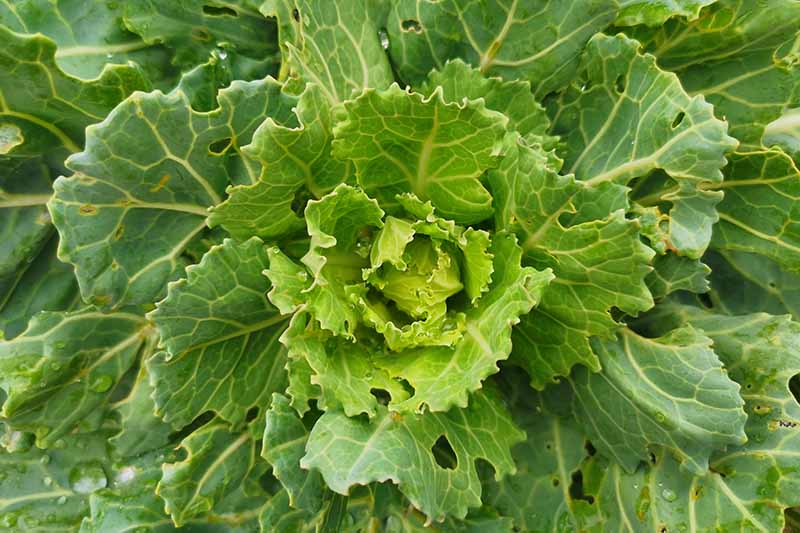
There is vegetative growth, but no reproductive growth – in other words, all foliage and no florets.
What It Looks Like
There’s ample foliage with no hint of vegetable formation at the center. To be sure, wait until the maximum number of days to maturity listed on the seed packet have passed before giving up hope.
Causes
One reason this happens is because there are genetic deficiencies in the seed itself.
Another may be physical damage to the central growing point by disease, animals, insects, or people working near the plants.
And finally, the temperature may have spiked or dipped, exposing a plant to extremes outside its comfort zone.
Avoidance Measures
To avoid the occurrence of blindness, select good quality seed that is not known to have this tendency. When you’re looking at a seed packet, if you find any language to indicate that the seed you’re choosing has been tested and not shown blind bud tendencies – it’s a good seed to buy.
Consider growing under floating row covers to protect the developing vegetables from physical contact with damaging elements.
Heed weather forecasts. Install floating row covers and mulch for added cold protection. Use shade cloth to repel UV rays during hot spells.
Choose plants appropriate for growing in your USDA Hardiness Zone, and cultivate as instructed. Starting plants too early or too late may result in irregularities.
2. Bolting
When a plant bolts, it “runs to seed,” halting growth in its tracks. It’s not uncommon during the early vegetative stage.
What It Looks Like
A center stalk forms, flowers, and sets seed. Once this happens, it will never form a head.
Causes
A sudden spike or dip in temperature early in the plant’s development may induce it to fast-forward to the end of its life cycle.

This is especially likely to occur if seedlings are transplanted to the garden too early in spring, when the weather is still cold.
Avoidance Measures
Make sure the seeds you sow are suited to your region. The days to maturity must match the length of your growing season, whether it’s spring, fall, winter, or all three.
Start seeds indoors, not only to get a jump on the growing season, but to protect them from the chance of a late-spring freeze.
Provide protection in the form of floating row covers, mulch, and shade cloth when weather predictions warrant them.
In the event of a heatwave, take extra care to ensure that plants don’t dry out which causes additional stress. Keep the soil moist but not waterlogged.
3. Browning
Sometimes during the reproductive stage, developing heads begin to discolor, a phenomenon called browning.
What It Looks Like
Florets have a brown, red, or yellow hue, either all over, or in patches.
Causes
Generally, browning is caused by a lack of boron, a micronutrient that is essential to healthy cell development. A deficiency may cause a progression of issues beginning with saturated stems and florets, followed by discoloration, deformation, and bitter flavor.
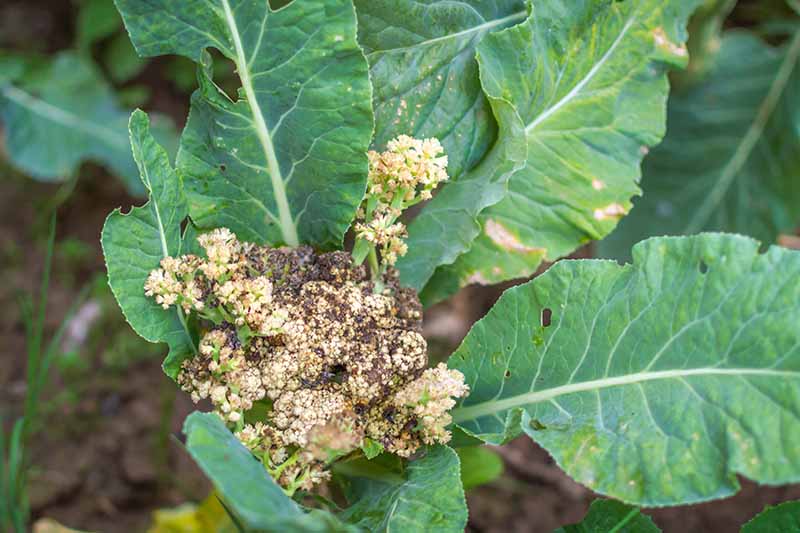
However, there are other reasons why a head that’s well underway may suddenly begin to change color.
It may be caused by too much direct sunlight. There are varieties that “self-blanch,” keeping their heads creamy white by covering them naturally with curved leaves. Other types do not, leaving them vulnerable to UV rays.
It’s also possible that boring insects such as aphids are leaving trails of “honeydew” that invite diseases such as downy mildew that cause unsightly damage.
Avoidance Measures
The best way to anticipate a mineral deficiency is to do a soil test before planting your garden. Cauliflower is a heavy feeder, and boron is a micronutrient that is essential for growth.
Amending your soil as recommended in your soil report will help to ensure that essential nutrients are available.
To minimize direct sunlight exposure, choose “self-blanching” varieties that wrap their inner leaves around the developing vegetable to shield it from intense, browning rays.
If your variety does not self-blanch, clip long leaves together over the head when it’s about the size of your fist, to provide shade. Wrapping with its own leaves will also ensure adequate airflow, to avoid other problems such as fungal growth.
To inhibit insect damage, consider planting under floating row covers, applying diatomaceous earth as a preemptive measure, and keeping the garden weeded. Keeping insects at bay also goes a long way toward limiting the spread of diseases.
4. Buttoning
If your plant encounters a stressor at the time when it should be putting on lush foliage, this can cause it to suddenly shift to head development prematurely.
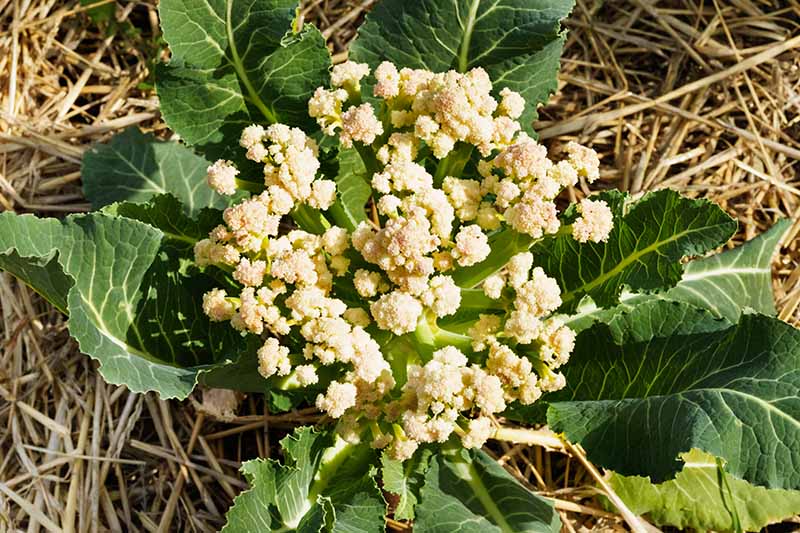
This results in button-like florets.
What It Looks Like
Florets form in the center of the foliage. However, instead of heading, they are separate, each with its own small, button-like top.
Causes
Nutrient deficiency in soil, especially a lack of nitrogen, can cause this type of reproductive growth. Transplanting too long after the seedling stage may interrupt crucial vegetative growth that was in full swing.
Improper “hardening-off” – the gradual acclimation to the outdoors – can also stress a plant and disrupt its development.
Seeds or seedlings that go into the ground too soon in spring, or too late in fall, may experience temperatures that are too warm or too cold for proper formation.
If a plant dries out or becomes oversaturated, it may react with unusual head formation. And finally, we’re back to those pests and diseases that wreak havoc on stressed and vulnerable plants.
Avoidance Measures
Only a soil test can determine the nutrient content of soil, so conduct one before planting. However, nitrogen is hard to measure, so a well-balanced, slow-release fertilizer might be beneficial. Choose one without a high nitrogen content to avoid excess foliage production.
The idea is to supplement nitrogen – but not overdo it – which could tip the scale towards excess foliage production.
Pay strict attention to average frost dates for your region, and be sure to plant seedlings accordingly. Don’t transplant them too soon in spring or too late in fall, and acclimate them gradually to the outdoors.
In addition, don’t hold seedlings so long that they are no longer seedlings when put into the ground.
Choose varieties that suit your growing seasons, and beware of some short-season, early-maturing varieties that lack a long vegetative period, making them more likely to button under stress. Examples of these would be ‘Early White’ hybrid and ‘Attribute’ hybrid.
Provide even moisture to minimize stress, and use floating row covers and shade cloth to accommodate temperature fluctuations.
Best practices like using seed appropriate for your region, growing under floating row covers, maintaining even moisture, weeding, and spacing plants per seed packet instructions for proper air flow also help to minimize potential insect and disease damage that may lead to buttoning.
5. Head Splitting
An ideal head is a compact group of florets with tight curds, whereas one that is stressed in its growing environment may split into separate sections.
What It Looks Like
A split head looks as though the florets are beginning to separate from each other.
Causes
A wet spell during the final maturation stage can cause this to happen, as head splitting is often the result of too much moisture that leads to a growth spurt.
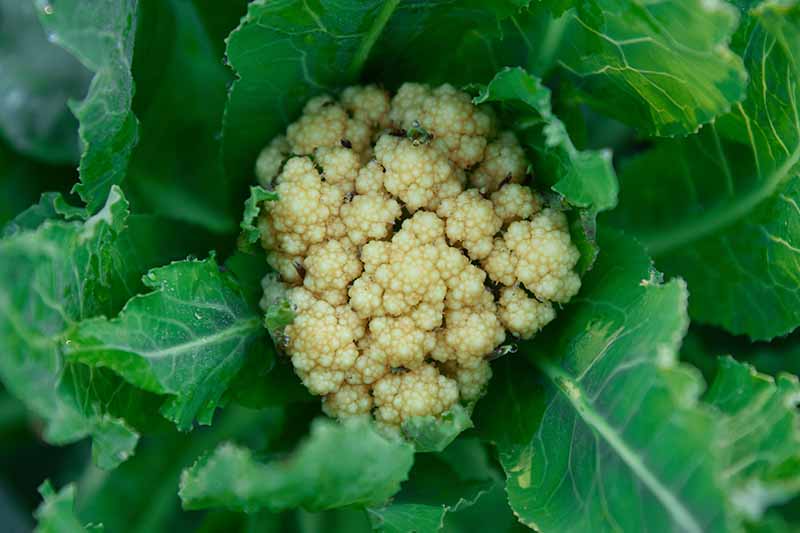
Waiting too long to harvest a crop can also cause splitting, when heads continue to mature past their peak and begin to separate.
Avoidance Measures
Plants need 1-1.5 inches of water per week. Adjust your supplemental watering schedule accordingly when rain is predicted.
Be sure your soil drains well, so plants aren’t sitting in puddles.
Use your best judgment at harvest time. If heavy rain is predicted, it may be better to have slightly smaller heads than larger, split ones.
6. Leaf Tipburn
Leaf tipburn is a condition that starts with the leaves and may progress to head damage.
What It Looks Like
The inner leaves turn brown on the edges, and the discoloration often spreads to the florets. The stressed plant then becomes vulnerable to disease.
Causes
A deficiency in calcium, an essential macronutrient, may cause this condition.
It may also be caused by high temperatures and/or a lack of moisture.
In addition, if there’s too much nitrogen in the soil, it can cause a growth spurt that stresses the plant and makes it vulnerable.
Avoidance Measures
A soil test is the best way to evaluate the nutrient content of soil before planting. Test reports indicate remediation methods, such as the application of lime.
Be vigilant when it comes to the weather, and anticipate a spike in temperatures by using shade cloth to block intense UV rays.
Maintain even moisture to avoid growth rate fluctuations.
Limit nitrogen fertilization during the reproductive stage, as it promotes foliar growth. According to the University of Massachusetts Amherst, too much nitrogen can cause the outer leaves to accumulate calcium, leaving less available for the younger, developing leaves.
And as always, only plant varieties recommended for your region.
7. Leafy Curds
Optimal formation results in a compact head with tight-budded florets.
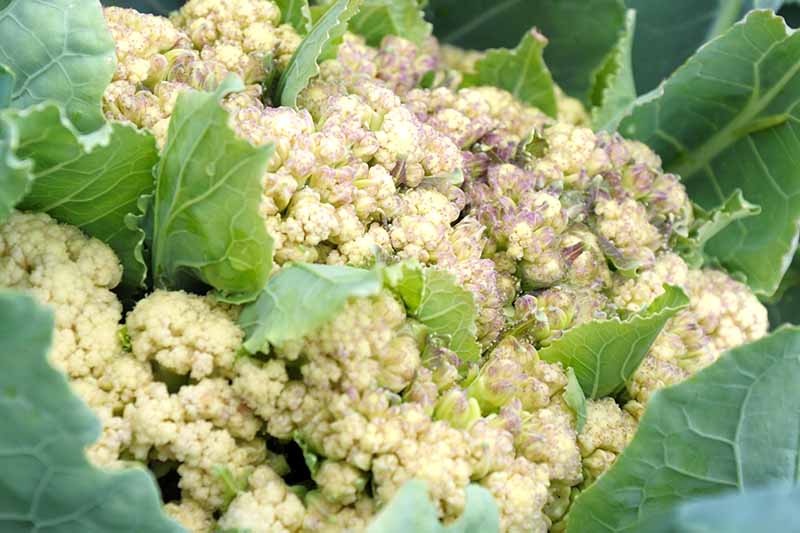
However, heads may become leafy under less than ideal conditions.
What It Looks Like
Instead of tightly packed florets, they may be somewhat loose, with foliage protruding between them.
Causes
A spike in temperature, or waiting beyond maturity to harvest, may stimulate vegetative growth where there should only be reproductive growth.
Avoidance Measures
Use shade cloth in the event of a heatwave. Be sure to plant varieties suited to your region.
Harvest as recommended per seed packet instructions for optimal appearance and flavor.
8. Ricing
Instead of classic smooth florets, sometimes a plant produces curds with elongated flower parts called peduncles, which detract from the overall appearance of the head.
What It Looks Like
Riced curds look like white fuzzy mold or grainy/velvety cooked rice.
Causes
There may be too much humidity between plants, causing curds to form improperly.
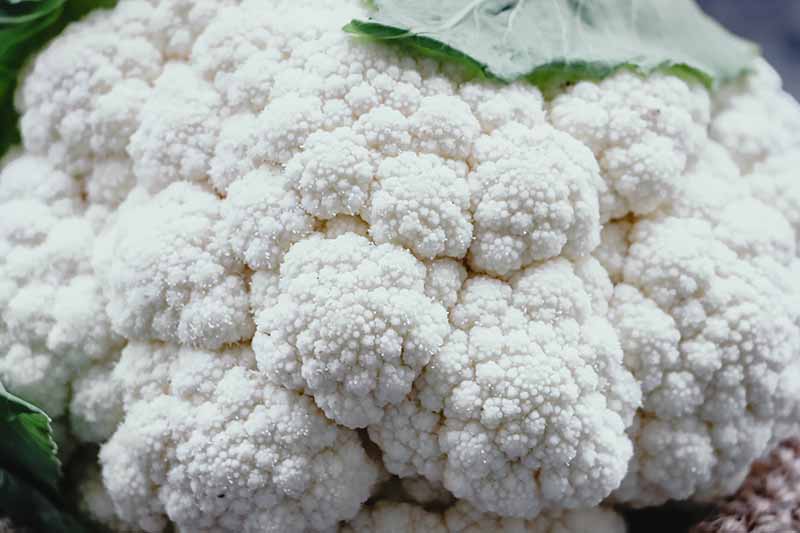
If the temperature spikes during the reproductive stage, stress can cause developmental alterations. The soil may contain excess nitrogen, perhaps from over-fertilization.
A wet spell may cause accelerated and irregular growth.
Avoidance Measures
Space plants per seed packet instructions to allow for ample airflow and minimize humidity.
Provide consistent moisture to minimize growth spurts and limit supplemental water during wet spells.
Grow cultivars suited to your region.
Read more about preventing ricing here.
9. Whiptail
The whiptail condition is the result of a nutrient deficiency that may inhibit the center of the plant from forming a head.
What It Looks Like
Detecting whiptail involves inspecting the leaves. If they are yellow around the edges, whitish, or lack typical vein formation, this condition may be present.
Causes
A deficiency in the micronutrient molybdenum can cause this condition.
It may also be the result of soil that’s too acidic. Cauliflower prefers a pH that is slightly acidic to neutral, in the range of about 5.5 to 7.5.
Avoidance Measures
Conduct a soil test to determine pH and molybdenum content, and remediate as directed. Lime may be used to “sweeten” soil that’s too acidic. This can make the molybdenum more readily available for uptake by the plant.
An Ounce of Prevention
Cauliflower’s temperamental nature can make it challenging to grow, unless you know how to avoid the most common head formation disorders.
You are now ready for your best crop ever!
Plan your next vegetable garden today, and put cauliflower at the top of the list!
And, we invite you to visit our sister site, Foodal, for tasty recipes that feature this nutritious veggie.
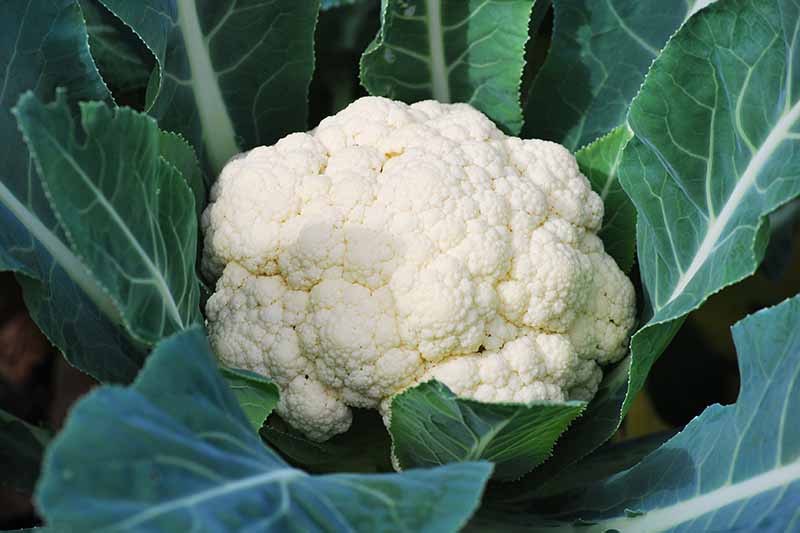
Have you ever grown cauliflower before? Please share your experience in the comments section below.
If you enjoyed this article, you might find the following cauliflower growing guides interesting:
- 11 Reasons Why Your Cauliflower May Not Form Heads
- Why Is My Cauliflower Turning Purple?
- 13 of the Best Cauliflower Companions
© Ask the Experts, LLC. ALL RIGHTS RESERVED. See our TOS for more details. Uncredited photos: Shutterstock.
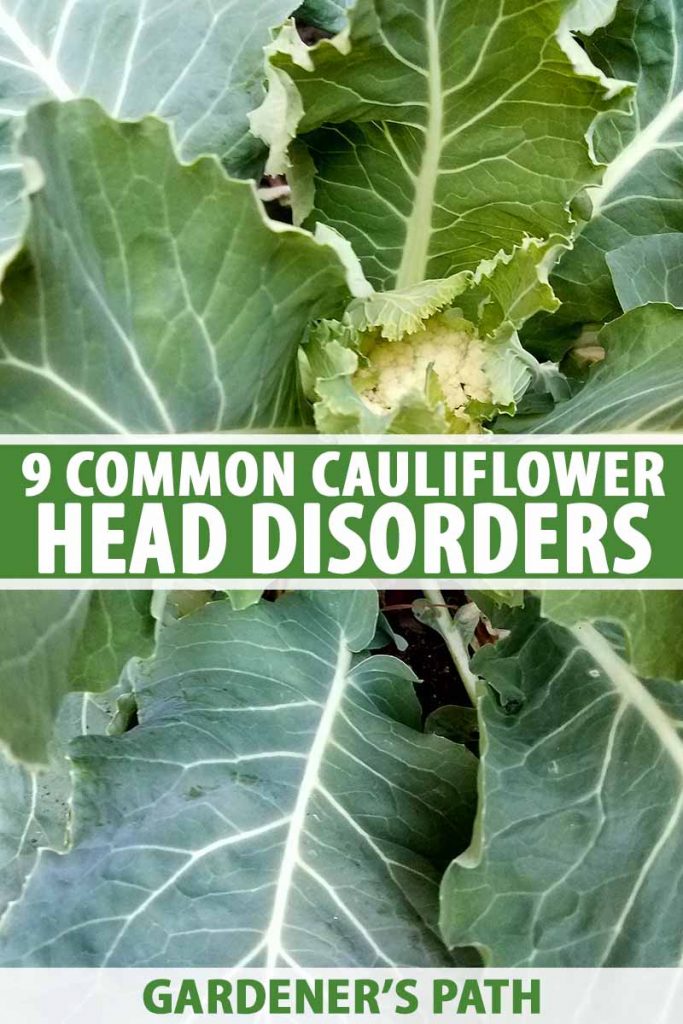
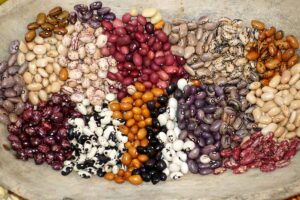


Do I get rid of my bolting cauliflower plant? It’s one wet month in and it has many small heads
Hi Elyse –
Unfortunately, a head that bolts has begun the end of its life cycle and will not regrow. Enjoy the small heads, if you can.
What is happening to my cauliflower.